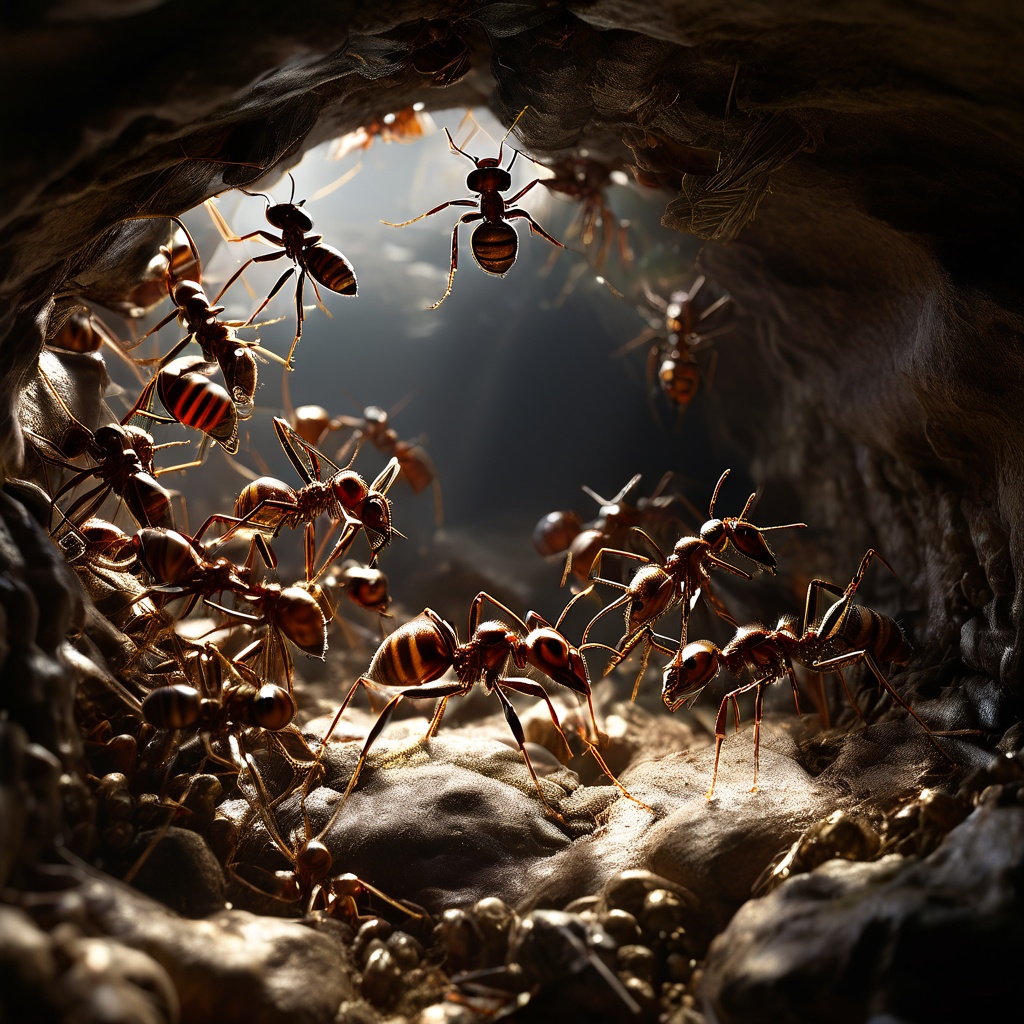
Aruba, a Caribbean gem known for its white sandy beaches and sunny weather, is also home to a surprising diversity of wildlife. Among the less visible but vital inhabitants of the island are ants, small insects whose lives are deeply influenced by the region’s changing climate. This article explores how the rainy and dry seasons in Aruba affect ant behavior, revealing fascinating adaptations and survival strategies that allow these tiny creatures to thrive in a challenging environment.
Aruba enjoys a semi-arid tropical climate, characterized by warm temperatures year-round and a marked distinction between the rainy season, which generally runs from October to December, and the dry season, which predominates during the rest of the year. Unlike other Caribbean islands that experience more abundant rainfall, Aruba receives relatively low precipitation, posing unique challenges for the species that inhabit the island.
With the arrival of the rains in Aruba, the island is transformed. Plants bloom, temporary water sources fill up, and the dry landscape comes to life. For ants, this is a period of intense activity. During the rainy season, ants increase their foraging efforts, taking advantage of the abundance of food. It has been observed that some ant species on the island, such as leafcutter ants, intensify their collection of plant material to sustain their growing colonies. Additionally, the extra moisture allows ants to expand their colonies. The underground tunnels and nests they build are less likely to collapse in moist soils, making it easier to create more complex and expansive structures. This is also a crucial time for reproduction. Winged ants, both males and females, emerge in large numbers to mate, ensuring the continuity of the colony.
With the arrival of the dry season, life in Aruba becomes tougher. Food sources become scarce, and the heat and lack of water challenge all forms of life. Ants are no exception. During this time, ants in Aruba reduce their activity, limiting their foraging trips to the cooler hours of the day, such as dawn or dusk. One of the most notable strategies is their ability to store food. Some ant species have underground chambers where they accumulate seeds, plant remnants, and other edible materials during the rainy season, allowing them to survive during the drier months. They also reduce their metabolism, conserving energy and limiting their needs until conditions improve. The dry season also affects the hierarchy within the colonies. With fewer resources available, competition within the colony can intensify, and only the strongest and most adapted members survive. This, in turn, strengthens the colony’s overall resilience.
The climate not only directly affects ants but also influences their interactions with other species. For example, the availability of certain types of prey and competition with other ant species can vary significantly between the wet and dry seasons. Additionally, symbiotic relationships with plants, such as the protection of acacia trees in exchange for nectar, are also modulated by climatic conditions.
With global climate change, Aruba is likely to experience even more extreme variations in its weather patterns. This could mean longer dry seasons or more intense and brief rains, which would, in turn, have a profound impact on the behavior and survival of ants on the island. Studying these changes is not only crucial for better understanding Aruba’s ecosystem but also for anticipating how small changes in the behavior of species as tiny as ants can reflect broader environmental trends.
Ants offer a fascinating glimpse into how small organisms adapt to the variable climatic conditions of their environment. From intensified activity during the rains to meticulous resource conservation during droughts, ants display impressive resilience and adaptability, which is why it is always advisable to have a service like monthly pest control to prevent these insects from affecting our daily lives. Observing and understanding these behaviors not only enriches our knowledge but also alerts us to how we can prevent infestations.
